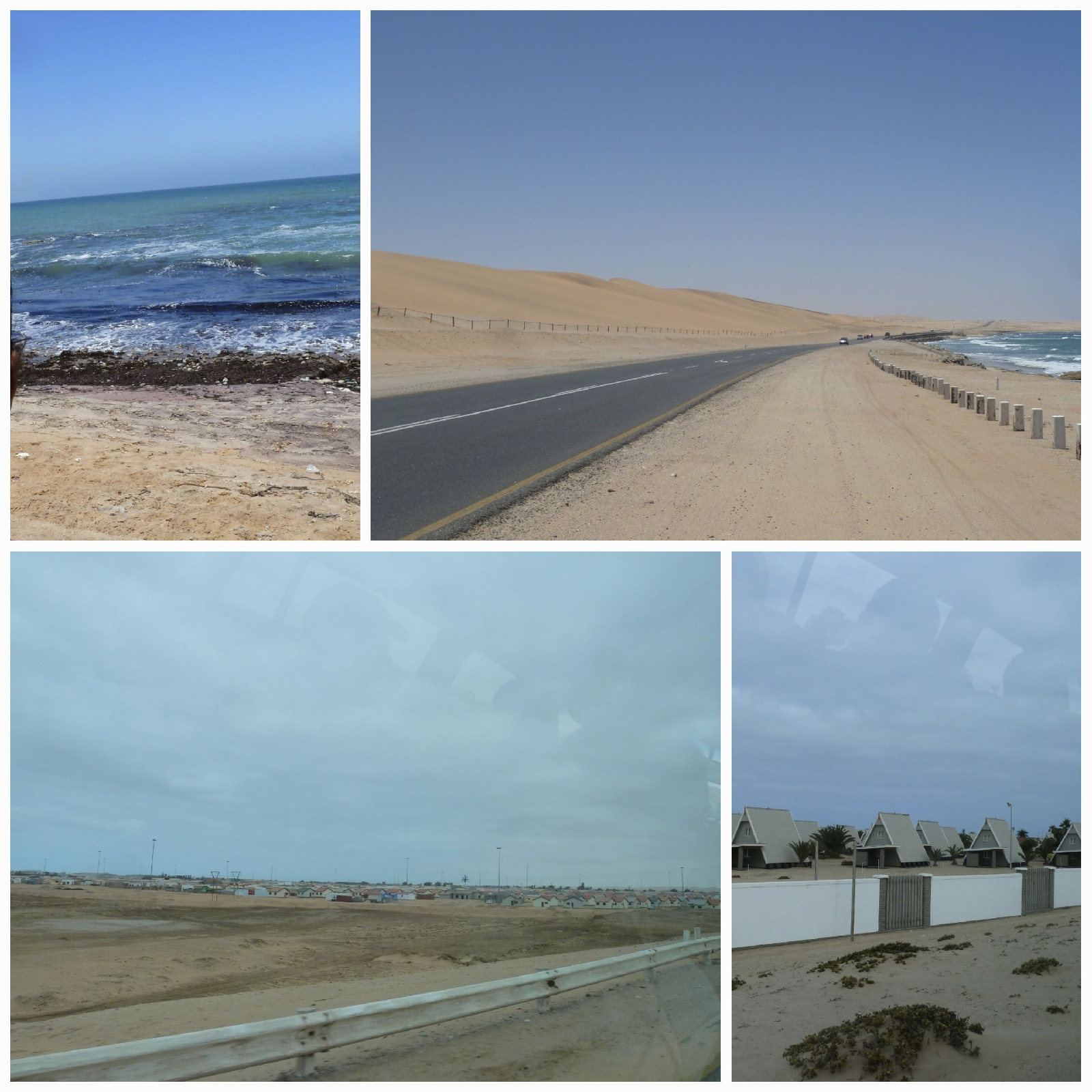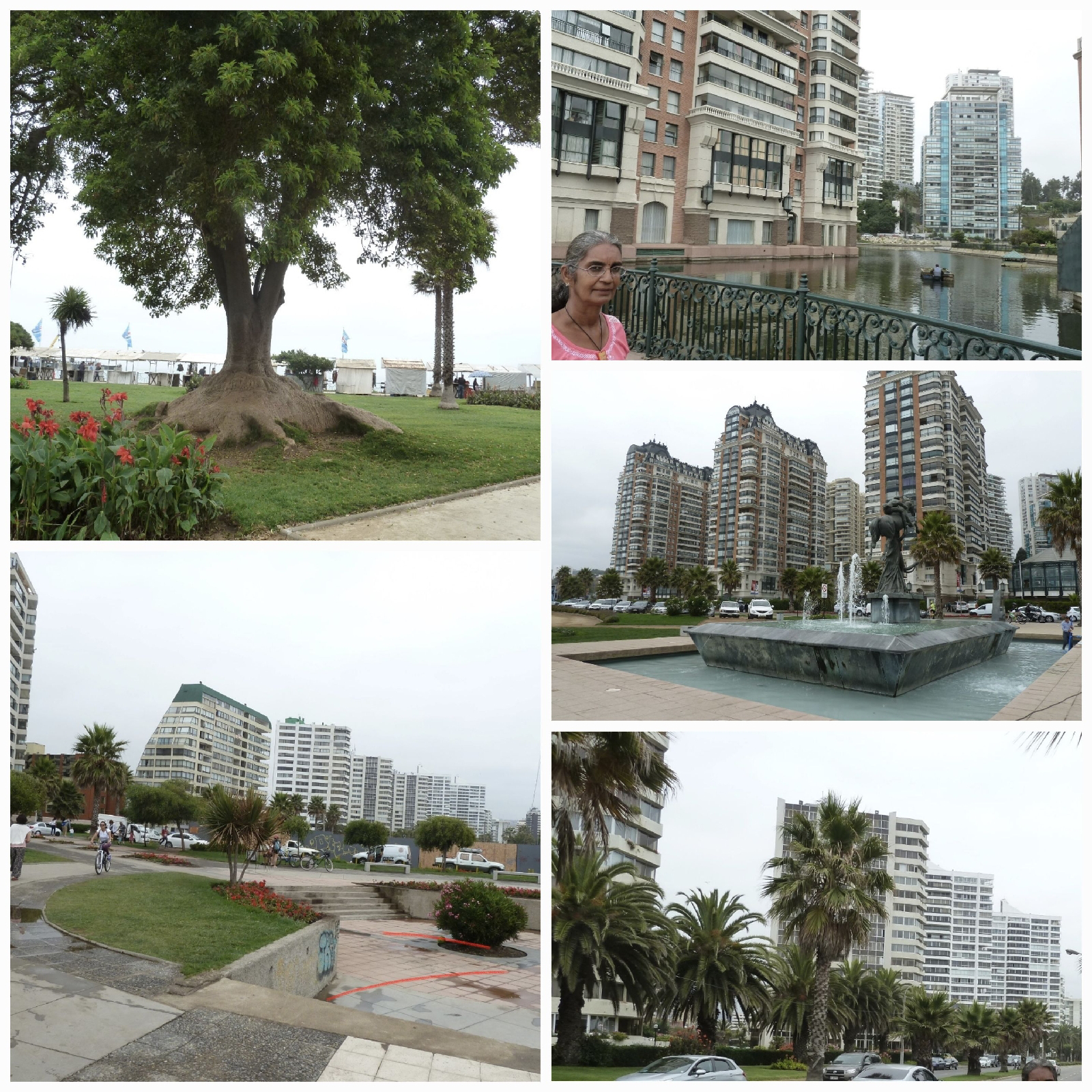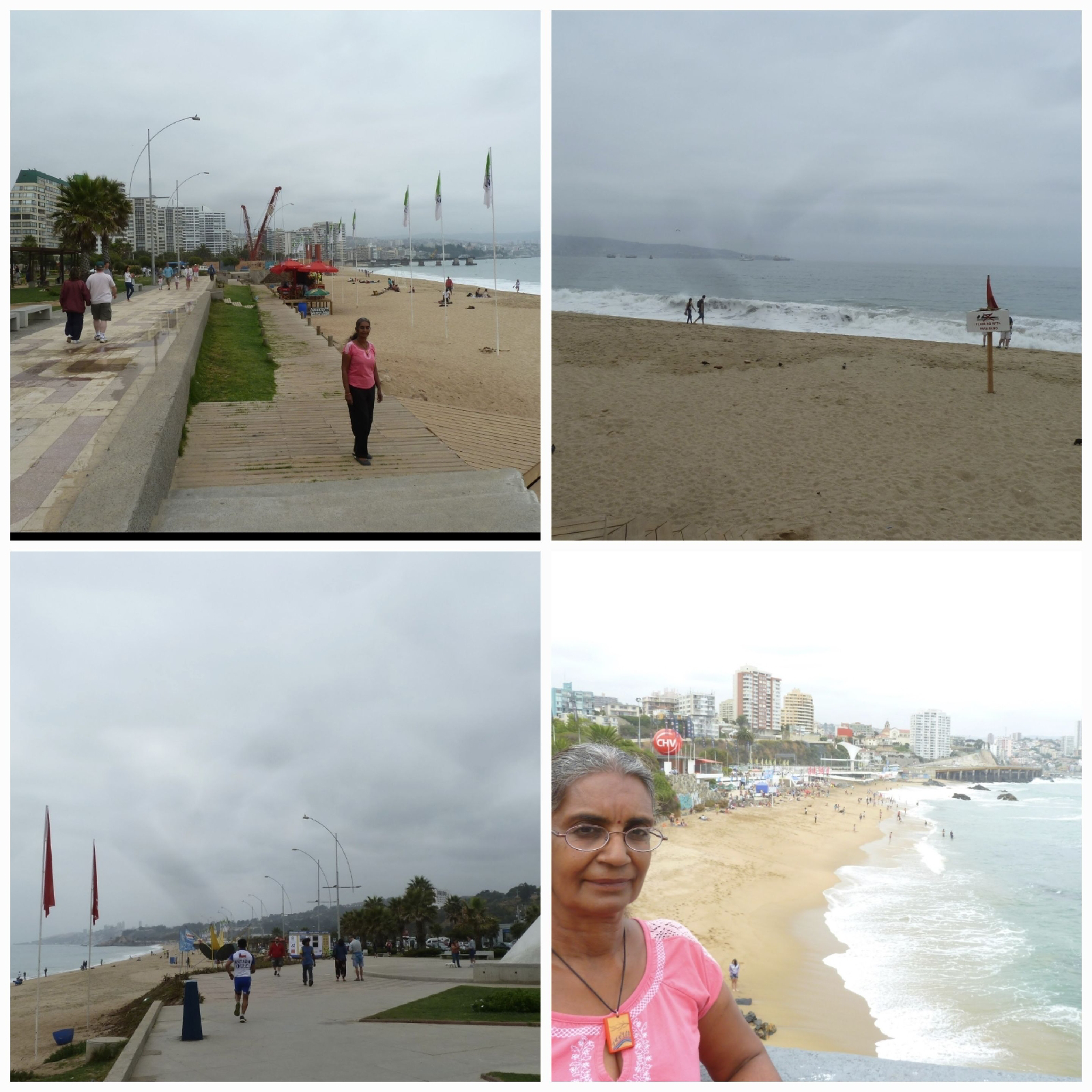A pier lined with marble!
We are in Walvis Bay. Something I certainly had not even dreamed of after my school years. What will it have in store for us? Will it prove different from the general view that it is in an African country and therefore not as developed as the rest of the world? What can our visit show us?As we step off the gangway we are confronted not by the heat but huge blocks lined up on both sides of the pier. It takes a few minutes for us to absorb the fact that these are blocks of marble each weighing at least 2 tons, ready to be hoisted onto ships for export to affluent nations. We can see the busy commercial port ( with a thriving fishing industry) much further. It is the year 2014, when the harbour has just begun constructing a container port on reclaimed land.
Sunny but desolate
A 10 min risky walk amid the machinery on the pier takes us to the gates which will be locked overnight. The road that leads us to the 'city' is lined with sheets weighted down with wood craft of animals and masks - very attractive souvenirs. We walk past the vendors, who are not pesky at all, along the road that leads to the city centre. But where are the people? There seems to be a long rectangular building with rarely anyone entering or leaving. It appears to house a small convenience store within (no store front) and perhaps some other businesses. Should we enter to explore? No, we'd rather move along.
Upscale but still
Now we seem to be in a fashionable area. Houses are well laid out in a grid. What more they boast manicured and landscaped gardens. Even pine trees. Still, everything but the foliage seems to be still. The gardens are planted with succulents, desert flowers, waxy and fuzzy leaved plants etc.
A little more wandering leads us to a small church in the distance set in a desert like surrounding. It's Walvis Bay’s oldest remaining building: the Rhenish Mission Church. I have since learnt that the building was prefabricated in Hamburg, Germany, and then reconstructed beside the harbour in 1880. It was consecrated the following year. It had to be relocated later( because the harbour had became heavily mechanised and therefore posed a risk), to the present site in the mid-20th century. It functioned as a church until 1966.
We then come to a functioning unpretentious church with a mural depicting the 3 magi on a boat. Its the Dutch Reformed Mother Church with a fascinating history of Christianity in Africa with places of worship designated based on race and conversion.
Commercial buildings: What is a saree shop doing here?
As we approach the city centre we come across a home/ store (closed) that advertised Indian clothing at half price. Why is it not not open? We could have had a conversation with the proprietor.
And what is that attractive building with thick thatched roofs.? A restaurant.
We begin to see more people movement since we are now at a large grocery store with angled parking for customers.
Stirrings
We have walked a long way but we are not at all sweaty in spite of the hot sun. We now approach a teenage crowd. These are students at the international school all looking very serious. Usually we stop to have conversations with students, but this time we don't. And then, again, we seem to be the only people walking along a huge expanse of lawn, punctuated by palm trees. A huge building looks rather inviting. As we walk towards it we realise it is a municipal building and attached to it is the city's library. We love libraries. Librarians are usually well informed and gregarious. The librarian we meet here is no exception. She points to the little museum from where we learn a little of the history and geography of the area.
Satisfied that we've had a feel for the city we make our way back to the ship. After a quick lunch and some rest I think I should walk along the water front to the lagoon famed for its flamingoes. Its later in the day, closer to sun set and yet the esplanade is devoid of people. It gives me a sense of wilderness.
Chomping on an apple I walk for nearly an hour hoping to get to the reeds I'd seen from far away that mark the nature sanctuary. But it's getting darker and so I abort the attempt. Three, slightly pink pelicans, lined up below the oyster bar on stilts, calmly gaze at me as though consoling me.
The burning questions answered
The streets were quiet and the houses all shuttered. Why? Because of sandstorms, of course! In fact a locomotive stands unused at the station because sand storms cover tracks upsetting schedules and damaging equipment.
So, if I'd knocked on the door of the saree vendor someone would probably have opened it.
Where are the ship's passengers? Mostly on excursions to the lagoon for bird and marine animal watching, and to the sand dunes, or to the salt fields ( that supply 90% of south Africas needs) doing what is offered up for tourists.
A majority were busy sliding oysters into their mouths at the oyster bar.
Tourists did not swarm into the city or become a public nuisance as is wont to happen in major cities.






























